Plan your Guizhou tour? With the total area is 170,000 square kilometers, Guizhou Province, known as Qian for short, is situated on the eastern part of Yunnan-Guizhou Plateau in southwest China. Guizhou Province has a subtropical humid climate. The capital city of Guizhou Province is Guiyang.
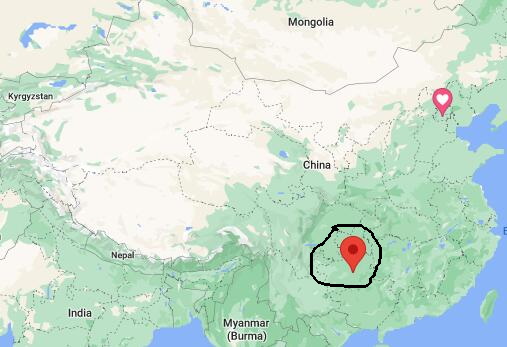
More than 15 minority groups settled in Guizhou and most of the amazing scenic areas are located in these settled minority areas. In addition to enjoying the scenery, visitors can discover the rich and varied folk cultures of the different minorities.
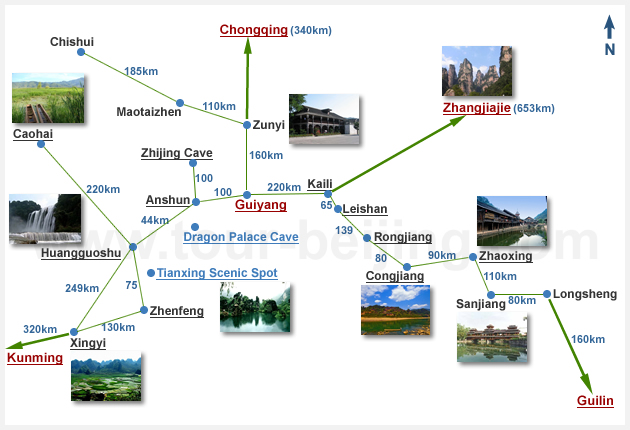
No. 1: Huangguoshu Waterfall (黄果树瀑布)
Huangguoshu Waterfall, which is also known as Yellow Fruit Tree Waterfall, is one of the largest waterfalls in China and Asia, located on the Baihe River in Anshun, GuizhouProvince.
The main waterfall is 67 meters high and 83.3 meters wide. The scene changes while you are standing in different places. There is a cave in the rare wall of the waterfall called “Water-Curtain Cave”. In Chinese, we call it “Shui Lian Dong”.
Check out my another article How to Visit Huangguoshu Waterfall for more information.
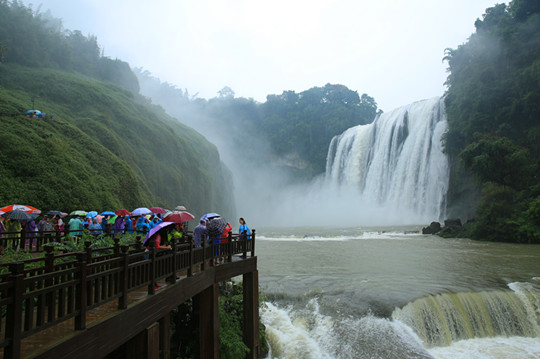
It allows visitors to not only view, but also hear and touch the waterfall. Huangguoshu Waterfall is one of few waterfalls that can be viewed from every side in the world. Huangguoshu Waterfall is a really famous attraction and definitely worth a visit.
Entrance Fee: CNY 180 (including Waterfall, Tianxingqiao Bridge and Doupotang Scenic Areas).
Opening Hours: 08:10-18:00
How to get there: There are long-distance buses from Anshun Train Station, South Station and West Station to Huangguoshu Waterfall every day.
No. 2: Qingyan Ancient Town (青岩古镇)
Qingyan Ancient Town, which is located at the south suburb of Guiyang (the capital city of Guozhou Province), is one of the four ancient towns of Guizhou. It is about 29 kilometers away form the downtown area. Bcause of its long history and strong cultural atmosphere, ingyan Ancient Town is regarded as the most attractive town of China.
Check out my another article How to get to Qingyan Ancient Town for more information.
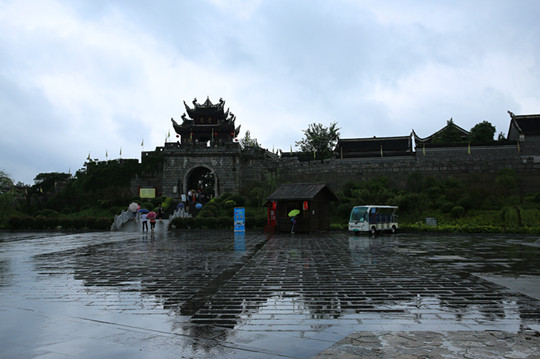
Qingyan Ancient Town covers an area of 3 square kilometers. Qingyan Ancient Town has a well-planned architectural style, hundreds of sites of relics, and an influential local culture. As a military garrison during ancient times, Qingyan Ancient Town was built of stone.
What’s more, there are Buddhists, Nazarenes and Romanists in this town. Qingyan Ancient Town is really a good place for you to learn about Chinese ancient culture.
Entrance Fee: Free
Opening Hours: All day
No. 3: Xijiang Qianhu Miao Village (西江千户苗寨)
Miao people are everywhere in southwest China, mostly in Guizhou Province. Xijiang Qianhu (1000 Househoods) Miao Village is the largest Miao village in China. It is located on the north side of Leigong Hill, about 35 km south of away Kaili city in Guizhou Province.
Check out my another article How to get to Xijiang 1000-Household Miao Village`for more information.
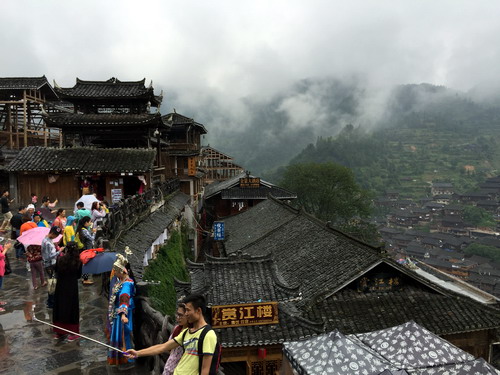
It is said that there are over 1,000 families with a total population of around 6,000 people living in the village, hence the name of “Qianhu” which literally means “One Thousand Families” and 99.5% of the local people are Miao nationality.
Layer upon layer of wooden-stilted houses are constructed along the slopes of the hill. The pretty Baishui River is winding past the bottom of the mountain. Wind-rain bridges link the banks of the river. It is a mesmerizing Miao village.
No. 3: FAST Radio Telescope 平塘天眼
FAST Radio Telescope (Pingtang) is located in the Dawodang depression, a natural basin, 50km southwest of Pingtang County, 160km south from Guiyang, 226 km from Xijiang 1000-Household Miao Village, Guizhou Province.
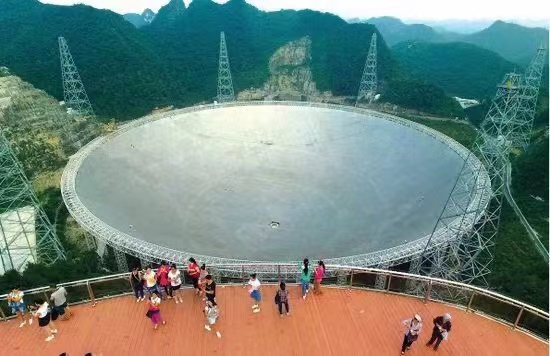
It is nicknamed as “天眼 Tiuanyan” in Chinese , or the Heaven’s Eyes. It is the world’s largest filled-aperture radio telescope and the second-largest single-dish aperture, after the sparsely-filled RATAN-600 in Russia.
Mobile phones, digital cameras, smart wristbands, walkies and other electronic devices are not allowed to enter the large radio observation platform.
No. 4 Libo Zhangjiang Scenic Area 荔波樟江风景名胜区
Libo Zhangjiang Scenic area is located in Libo County, 270km southeast of Guiyang, Guizhou Province, covering an area of 118.8 square kilometers. It is composed of large and small seven-holesscenic areas(Daqikong and Xiaoqikong), Shuichun River and Zhangjiang River.
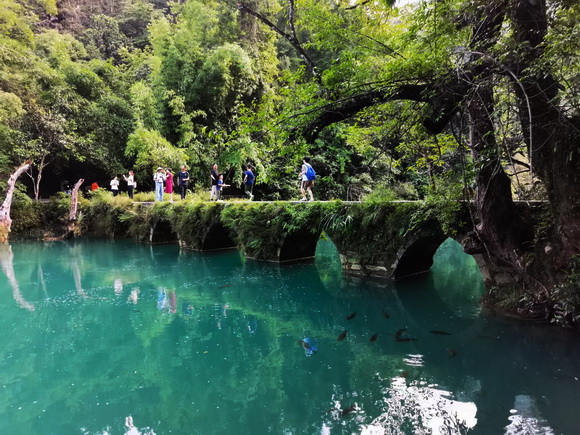
The scenic area is characterized by rich and diverse karst landforms, beautiful and peculiar Zhangjiang River waterscape, flourishing and dense virgin forests, and various rare species of plants and animals. It is the first World Natural Heritage site in Guizhou province, combining the unique natural scenery with the local Buyi, Shui and Yao ethnic characteristics.
No. 05: The Dragon Palace Cave (龙宫洞)
The Dragon Palace Cave Scenic Spot (also called Longgong Cave) is 27 kilometers southwest of Anshun city en route to Huangguoshu Waterfall in Guizhou Province.
The Dragon Palace Cave is a magnificent underground cave system with lakes, waterfalls and stalactites, covering an area of almost 60 square kilometers.
The scenic spot has four main areas, namely, the Rape Lake, the Whirlpool, the Leech Pass and the Dragon Palace itself. It is a comfortable place for people to relax because the radiation frequency in this region is the lowest in China.
Entrance Fee: CNY 150
Opening Hours: 08:00-17:00
How to get there: There are shuttle buses from Anshun West Station to the Dragon Palace Cave
No. 06: Chishui Danxia 赤水丹霞
Chishui Danxias is located in Chishui City in northern Guizhou Province. It is well known both at home and abroad for Chishui River War where the Red Army traversed in the road of the famous Long March.
Chishui is rich in natural resources. Chishui Scenic Spot covers an area of 116 square miles and boasts a wide variety of green forests, waterfalls, rivers and creeks, lakes and plants. Chishui city is also famous for its unique Danxia Landform.
Chishui Danxia landform has been recognized World Natural Heritage Site by UNESCO in 2010.
The abundant natural resources and the rich historical and cultural background together with the convenient traffic have made Chishui an ideal tourist attraction for visitors all over the world.
Entrance Fee: CNY 100
Opening Hours: 08:00-18:30 How to get there: you can take a bus to get to the Chishui Scenic Area
No. 07: Zhaoxing Dong village 肇庆侗寨
Zhaoxing Dong village is one of the largest Dong village in China, with some beautiful Drum Towers , Wind & Rain Bridges and traditional stages. Enjoy the traditional singing and dancing performance of Dong people at night.
72 km (48 miles) south of the county town of Liping, the village is seated in a valley surrounded by green mountains. The Zhaoxing River flows through the village.
No. 09: Mount Fanjing 梵净山
Mount Fanjing, named after the “Pure Land of Brahma”, is located at the junction of three counties of Yinjiang, Jiangkou and Songtao in Tongren City, 285km northeast of Guiyang, Guizhou Province.
It is also recognized as a World Natural Heritage Site by the 42nd World Heritage Congress on July 2, 2018.
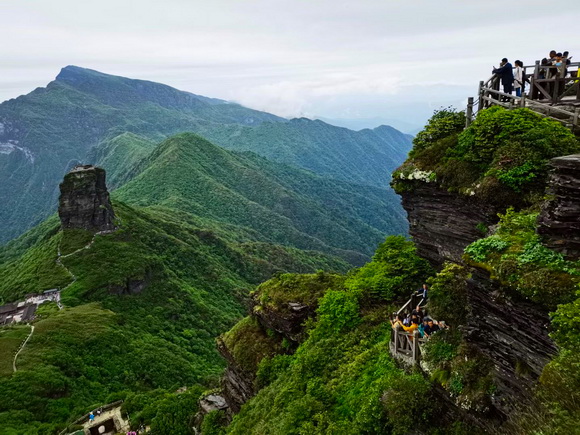
The heritage site is 402.75 square kilometers in size. It boasts rare wildlife and native forest ecosystems represented by Rhinopithecus roxellanae brelichi and Davidia involucrate Baill. With a forest coverage rate of 95%, there are more than 2,000 species of plants, 31 of which are under state protection.
Fanjing Mountain is also the site ( Daochanag) for the famous Maitreya Bodhisattva Ashtra in China.
No. 10: Maling River Grand Canyon Guizhou 马岭河峡谷
Location: in Xingyi, southwest of Guizhou Province
Uniqueness: the largest waterfall cluster in China
The Maling River Waterfall is composed of over 60 waterfalls along the Maling River Grand Canyon. The canyon is 74.8 km long with an average depth of more than 100 mand a width of 80-200
The gorge around the Malinghe River is a national scenic spot in south western part of Guizhou. It was formed during the Yanshan movement of the earth.
With fantastic views, precipices and waterfalls, the gorge is absolutely fascinating. Boat rides down the river provide great views of the beautiful scenery.15 km-long Maling River Gorge is located 10 km from Xiny. It has stunning and spectacular scenes with its limestone karst landscape and its more than 100 waterfalls cascading down to its deep valleys.
Tip: Hassle-free Escorted Guizhou
If you don’t want to go the do-it-yourself bus route and prefer the hassle-free guided tours, here are some options for guided tours to Guizhou:
Further Readings
Top 10 Attractions in Guizhou
How to Visit Huangguoshu Waterfall
How to Get to Qingyan Ancient Town
How to Get to Xijiang 1000-Household Miao Village
When is the Best Time to Visit Guizhou?
Any questions, just drop a line.






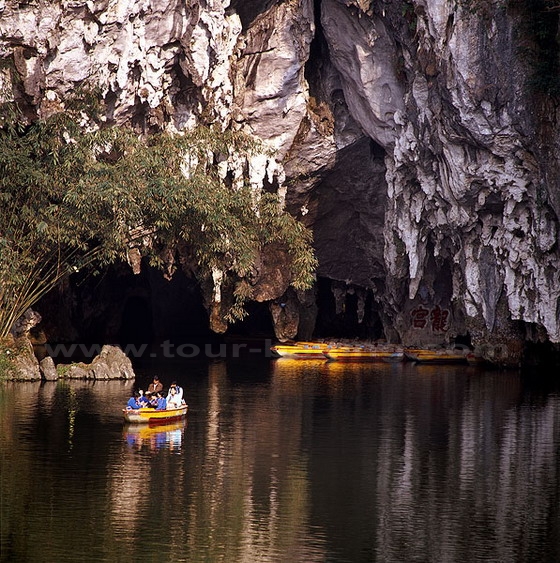
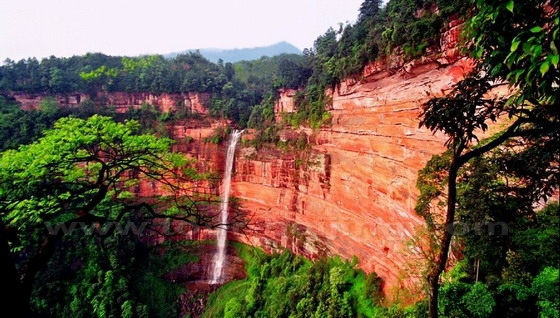
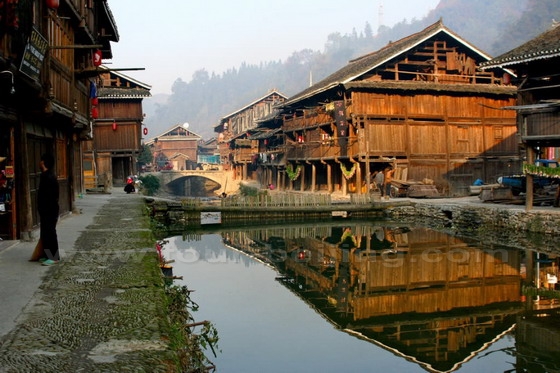
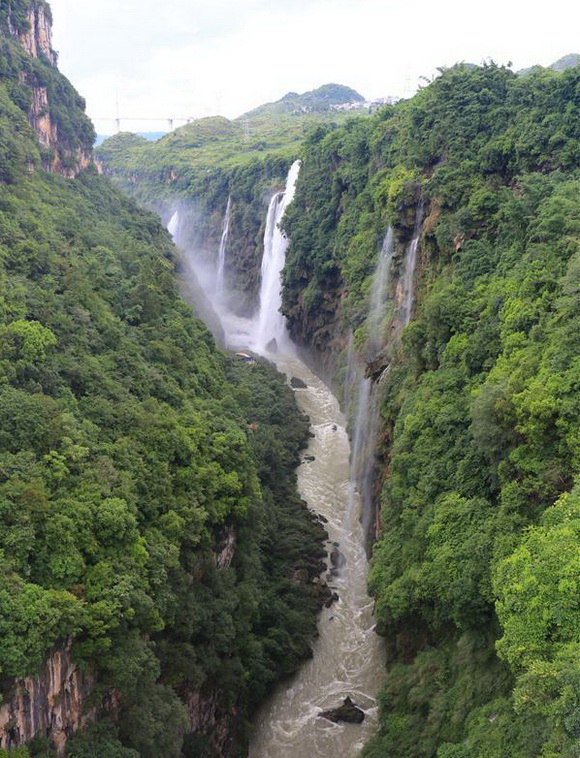
Hi, me and my family planning to visit Guizhou for 4days, need your suggestions on:
1. which location do you suggest us to stay so we can just do day tours to visit best attractions
2. Which attractions we should and be able to visit within 4 days.
Thanks
Hi Wendy Russell,
First, Guizhou is a province, not a city. If you want to visit Guizhou, basically you need to stay at its capital city of Guiyang.
Day 01: Visit the City of Guizyang
1) Jiaxiu Tower 甲秀楼
Jiaxiu Tower is perched on the southern bank of Nanming River. It was originally built based a giant rock dating back to Ming Dynasty ( 1368 – 1644). In Qing Dynasty it was rebuilt for several times and the present pavilion dates back to 1909. It is a three-story pavilion 20 meters high with white stone railings, Nanming River passing by at its front. A stone archway bridge named “Fuyu Bridge” connects the pavilion and spans the river. It has a stunning view with clear rivers and green mountains on its four side.
2) Cuiwei Garden 翠微园
Cuiwei Garden is a group of fairly large ancient buildings adjoining Jiaxiu Tower with an area of over 4000 square meters. The garden has the only Ming-era buildings left in Guiyang city, dating back to the years between 1488 and 1505. The garden features vividly designed buildings and pavilions, elegant long corridors with flower walls, a combination of quietness, grandness and simplicity.
3) Wenchang Pavilion 文昌阁
It is a Taoist temple that enshrines the God of Wenchang dating back to the year 1609 and went through several reconstructions in Qing Dynasty (1644 – 1911 ). The main building is 20 meters high, 11.58 meters wide with three stories and three eaves. It has an irregular nonagonal spire with painted window flowers and floors featuring the unique local architecture.
3) Guizhou Provincial New Museum 贵州省博物新馆
Guizhou Provincial New Museum is a comprehensive museum with a construction area of 46,000 square, 10 times the old museum which dates back to the year 1958. The new museum started to be operational 2015 with well-designed appearance and fashionable internal decoration. It mainly displays the artifacts related to ethnic minority groups including embroidery, wax dying, brocade, silver work and many more.
4) Qianling Hill Park 黔灵山公园
Qianling Hill Park is located about 2 km to the northwest of the city center of Guiyang. It is named after the namesake hill in the park. The park is known for its dense forest, clear water and charming mountain. Hongfu Temple in the park is worth exploring.
Originally built in 1667, Hongfu Temple is the largest temple of Zen Buddhism in Guizhou Province. Hongfu means to develop Buddha’s spirits and to benefit mankind. It stands near the top of Qianling Hill with a building history dating back to 17th century. It is a 40-minute walk to the temple, or you may take a cable up.
Day 2: Guiyang – Huangguoshu Waterfall – Guiyang
Huangguoshu Waterfall, which is also known as Yellow Fruit Tree Waterfall, is one of the largest waterfalls in China and Asia located on the Baihe River in Anshun, GuizhouProvince.
The main waterfall is 67 meters high and 83.3 meters wide. The scene changes while you are standing in different places. There is a cave in the rare wall of the waterfall called “Water-Curtain Cave”. In Chinese, we call it “Shui Lian Dong”.It allows visitors to not only view, but also hear and touch the waterfall. Huangguoshu Waterfall is one of few waterfalls that can be viewed from every side in the world. Huangguoshu Waterfall is a really famous attraction and definitely worth a visit.Entrance Fee: CNY 180 (including Waterfall, Tianxingqiao Bridge and Doupotang Scenic Areas).
Day 03: Guiyang – Xijiang Qianhu Miao Village – Guiyang
iao people are everywhere in southwest China, mostly in Guizhou Province. Xijiang Qianhu Miao Village is the largest Miao village in China. It is located on the north side of Leigong Hill, about 35 km south of away Kaili city in Guizhou Province.
It is siad that there are over 1,000 families with a total population of around 6,000 people living in the village, hence the name of “Qianhu” which literally means “One Thousand Families” and 99.5% of the local people are Miao nationality.
Day 04: Guiyang – Qingyan Ancient Town – Guiyang
ingyan Ancient Town, which is located at the south suburb of Guiyang, is one of the four ancient towns of Guizhou. It is about 29 kilometers away form the downtown area. Bcause of its long history and strong cultural atmosphere, ingyan Ancient Town is regarded as the most attractive town of China.Qingyan Ancient Town covers an area of 3 square kilometers. Qingyan Ancient Town has a well-planned architectural style, hundreds of sites of relics, and an influential local culture. As a military garrison during ancient times, Qingyan Ancient Town was built of stone. What’s more, there are Buddhists, Nazarenes and Romanists in this town. Qingyan Ancient Town is really a good place for you to learn about Chinese ancient culture.
The travel information above is only for your reference!
Dear Sir, a group of us intend to visit Guizhou in April17. We want to cover all the attractions above in a relaxing manner. Not rushing here n there. How many days do you reckon for this relaxing tour of Guizhou? Could you recommend to us a reputable n reliable in bound tour company? Thank you n God bless.
Warmest regards, William Chen
Hi William Chen,
Thanks for your inquiry! One of our trip advisors will contact you by email tomorrow. If you have any questions or further requests, just let us know. In your case, it may take quite a time for mutual commnunication before getting yo a travel plan you need both in terms of price and itinerary.
Have a good time in China!